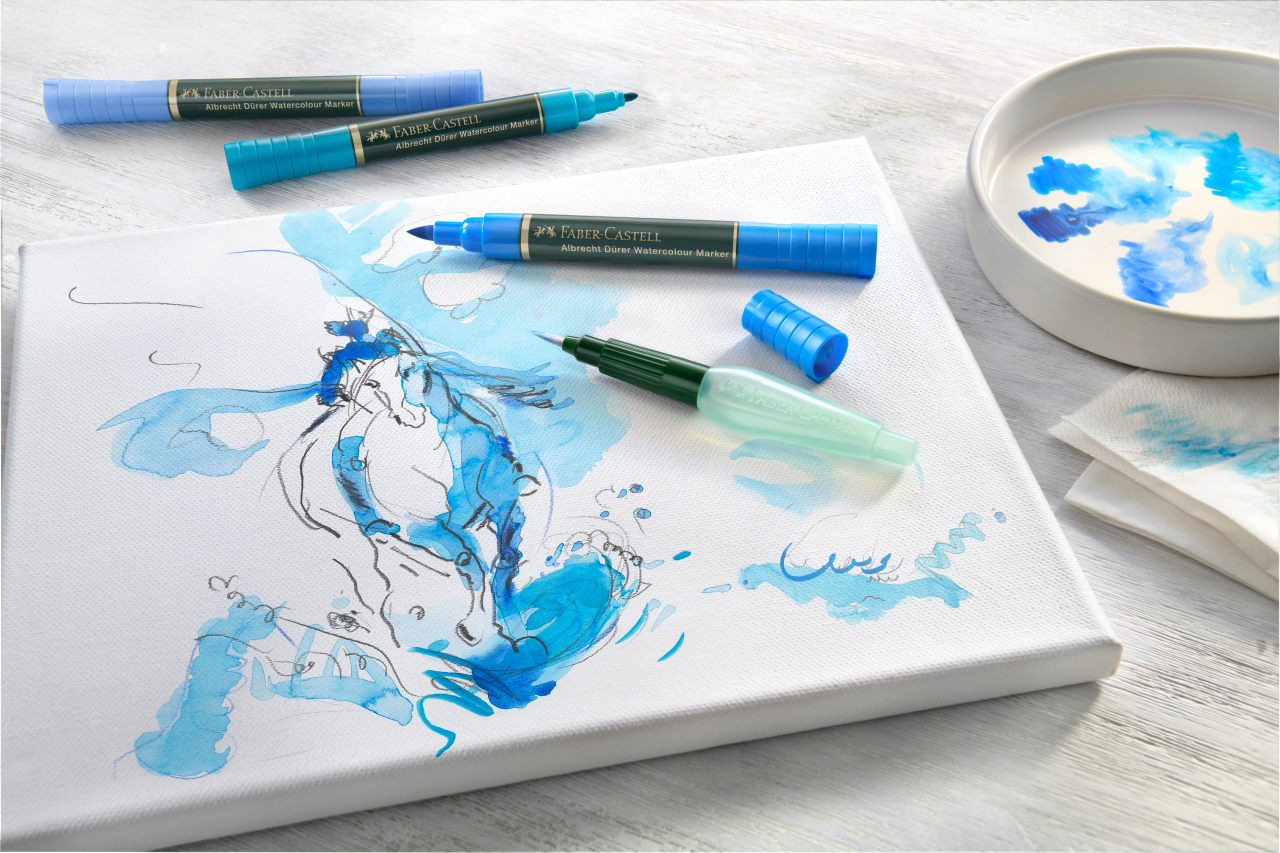Today in this article we will be sharing with you some tips and tricks when using watercolor marks. We will be focusing on Molotow’s watercolor markers.
However, this brush tip marker’s characteristics are the same as any other marker. You may also want to know that Can you use markers on canvas? This post will help you learn how to get the best out of your drawings.
We hope you will become an expert at watercolor techniques, especially with these helpful and easy tips. These tips can be applied to any artistic endeavor, including design, illustration, graffiti, lettering, and more.
What is a watercolor marker?
Watercolor markers are made up of a fine tip that is shaped like a brush. This tool simulates watercolor techniques with a brush but gives your composition a looser, modern look. It can be adapted to meet the needs of artists or any other creative person.
This marker is not like the traditional watercolor brush. It has a tip made from synthetic fiber instead of the hair-like synthetic hairs that traditional brushes have.
In the case of the Molotow Aquabrush watercolor marker, The tip is where it’s at synthetic felt. This material gives you greater control than traditional brush techniques while giving the tip flexibility and rigidity. You will notice a decrease in the tip of the marker and you can use looser antalya escort strokes.
Step by step, paint with watercolor markers using a brush tip
You now have a better understanding of the watercolor markers. It is time to learn how to apply the paint step-by-step to create drawings and sheets that are as amazing as the ones we will be showing you in this post. Let’s take it easy with these three steps. Also, you can check more Art related tips and guides here.
Draw an initial sketch on watercolor paper
First, create a sketch to use the color. No matter if you’re drawing a face, letters, or abstract shapes, it doesn’t matter what.
Started with an ordinary pencil to sketch the initial drawing. This will be used as a guideline for later adding different colors in each section.
When using a fine-tip watercolor marker, one thing you need to consider is the “weight” or paper. This is a very important step so do this with extra care. We recommend that the paperweight not exceed 150g/m2.
Ink, water markers, and color
It is best to apply the color on dry paper after drawing on the paper. Once the base color is applied, you can begin to fade the tones using:
- Regular watercolor brush
- You can also choose from other colors
- Use a brush and a water tank to clean your hair.
Remember that you can create a gradient by painting with one color and another with the same color. This is possible depending on the range of colors.
This is because the process with a traditional brush will be different. With watercolor markers, you need to be more insistent when creating gradients.
Let them dry and bury the remains
You don’t have to worry if you used a black fine-tip marker such as the Molotow Blackline for the outline. It is easy to remove just like the label’s watercolor ink.
Allow the drawing to dry for at least 10-15 minutes. You can test the paint in one corner to make sure it is dry. Don’t touch the drawing until it is dry. It would be shameful if you lose all of the work that you have done.
The strokes don’t move in direct contact with water, and the fine lines don’t disappear.
How to make watercolor stains
Watercolor stains are one of the most inventive techniques that you can use with watercolor markers. This is a simple resource, but it produces a great result. Follow these three steps to get started.
There are many ways to stain watercolor. We will show you how to do it in three simple steps.
Apply a watercolor deposit to the brush
Use the empty toothbrush with Molotow Watercolor Reservoir to apply the color you originally applied to the watercolor paper. Then, use this brush to remove any paint from the panel.
This brush can be used to recharge it directly with water, or you can make your color mixture for a more watery look.
You can choose the color markers that you wish to use for the mixture, and apply them to the paper as a stain. Mix the ingredients with the deposit brush, and you can create any shape you like.
It is important not to use too much color when applying paint. It is easier to use paint that is less liquidy and more fluid, and the well-mixed colors.
You may feel the paper becoming curled and heavy at this point. But don’t panic. It’s normal for the paper to curl when you apply too much water.
Get a new watercolor sheet
Once you are satisfied with your shape, you can now use another watercolor paper to place on top of the original sheet.
Place the sheet of watercolor stain on top and gently press down. Next, lift the paper carefully.
You can now wait for the paper to dry or continue the process until you are happy with the final shape of your watercolor background.
Use a marker to draw calligraphy on the background of your paper using watercolor
After the background is dry, you can make cool calligraphy. The watercolor does not change the color once it is dry so you can paint without worry.
In this case, and as you can see in the images below, we have used a fine-tip black marker–specifically, the Blackline brush tip marker to make TOP lettering.
There are advantages and disadvantages to using watercolor markers
Advantages:
- Water-based
- Ecological
- It doesn’t smell.
- Low price
- Very vivid color
- It behaves differently in each role
- It’s much more durable
- Professional finish
Disadvantages:
- Sometimes, when you are destroying it, the tip can produce “fuzz” (it erodes paper).
- Two passes are required to make a darker shade.
Don’t forget to find more articles here. And give your thoughts in the comment sections regarding this article. And also, share this information with your friends and family.







Leave a Reply